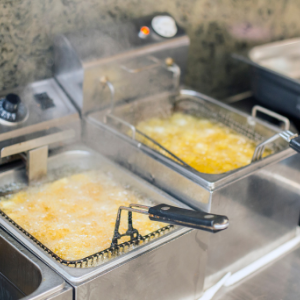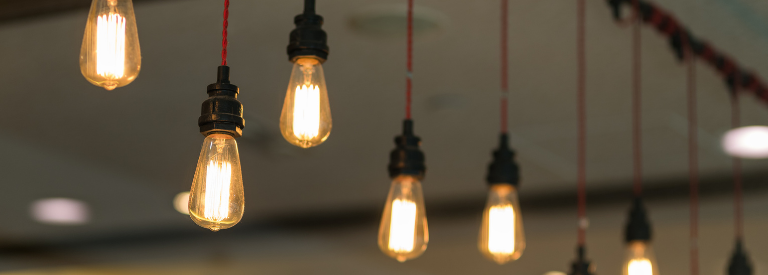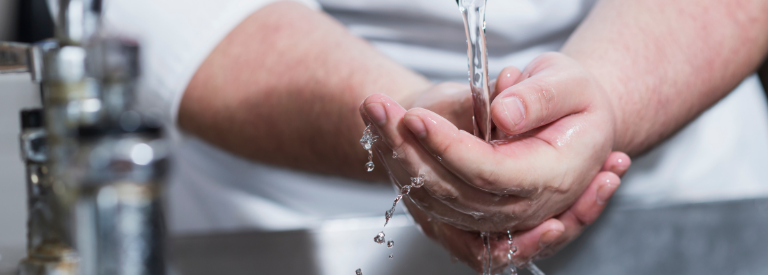Foodservice establishments use about 5 to 10 times more energy per square foot than other commercial businesses. Most of their electricity is used for refrigeration, lighting, cooling, and heating. Adopting energy conservation methods at your restaurant will help cut down utility costs and conserve the earth’s natural resources. This informative guide provides you with the 7 energy saving tips for restaurants to help your business increase its profits.
1. Maintain Your Restaurant Equipment
 Follow the manufacturer’s recommended maintenance and
servicing schedule for all of the equipment in your restaurant. If you
don’t regularly clean or service your kitchen equipment, it’s likely
requiring more energy to function and may see a decline in performance.
For example, if your hoods haven’t been properly cleaned in months, the
air quality decreases in your kitchen. A hood that isn’t properly
cleaned every couple of months won’t be able to properly remove odors,
smoke, grease, and other pollutants released into the air while you’re
cooking.
Follow the manufacturer’s recommended maintenance and
servicing schedule for all of the equipment in your restaurant. If you
don’t regularly clean or service your kitchen equipment, it’s likely
requiring more energy to function and may see a decline in performance.
For example, if your hoods haven’t been properly cleaned in months, the
air quality decreases in your kitchen. A hood that isn’t properly
cleaned every couple of months won’t be able to properly remove odors,
smoke, grease, and other pollutants released into the air while you’re
cooking.
If you need new commercial equipment, consider purchasing energy-efficient equipment. High efficient equipment uses less energy to function, allowing your business to save thousands of dollars per year. There are a number of high-efficiency restaurant equipment options available like dish machines, ovens, and fryers.
2. Cut Idle Time
Leaving idle equipment running when not in use costs restaurants hundreds of dollars each month. To prevent back-of-house staff from leaving idle equipment on, you can implement a startup/shutdown plan in your kitchen. This plan informs staff members when individual pieces of equipment should be turned on and off throughout the day. The goal is to only have appliances running when they are in use to prevent kitchens from wasting energy.
3. Switch To Energy-Efficient Lighting
Lighting averages 13 percent of the total energy breakdown of a restaurant. One of the most simple and effective ways to conserve energy is by replacing conventional incandescent bulbs with LED bulbs. LED lights use less electricity and last up to 10 times longer than incandescent bulbs. While updating your light bulbs is a great place to start, you can also make additional changes to your business to conserve more energy and lower your greenhouse emissions:
- Set up dimmers: Daylight dimmers are sensors that automatically dim lights based on the amount of natural light in the room. Many energy-efficient restaurants install dimmers in their dining areas.
- Employ daylight sensors: A number of restaurants tend to leave their patio lights on during the day. Installing daylight sensors, also known as photocells, ensures that exterior lights are on at sunset and off at dawn.
-
Install occupancy sensors: These sensors
automatically turn on and off lights by detecting motion and changes
in their environment. They are typically installed in storage rooms,
break rooms, and restrooms to prevent having lights on when they are
not in use.

4. Invest In A Wireless Thermostat
A wireless or smart thermostat allows restaurant owners to manage and automate the temperature for each area in the establishment. It prevents staff members from needing to change the temperature when opening or closing the restaurant. You can also lock your desired temperature to prevent customers or employees from tampering with the thermostat without your permission. This allows you to optimize energy usage while keeping every part of your business at the perfect temperature.
5. Label Switches & Sockets
To become an energy-efficient restaurant, you should consider labeling every switch and socket. While it may sound like a daunting task, it will help cut down your restaurant’s energy waste. Many of your employees switch everything on when they arrive to work. They are likely turning on equipment they don’t use during their shift. Labeling switches and sockets will encourage them to only switch on what they need and turn it off after use.
6. Reduce Water Consumption
Water usage in your restaurant has a major impact on the environment and operating costs. From washing your hands after handling food to ice machines making ice, your business is constantly using water. While your restaurant needs to use water to operate, there are numerous water-efficient practices you can implement to maximize savings on utility bills:
- Repair leaky faucets: A leaking faucet or pipe can generate a huge volume of water waste, making it essential to fix it immediately.
- Serve water if guests ask for it: Many patrons will order a soda or lemonade and not drink the complimentary water you serve them. To save water, simply ask customers if they’d like a glass of water when taking their order.
- Fill dishwashers before using: Dishwashers consume a lot of water so it’s ideal to only operate them when they’re filled with dishes.
- Install water-efficient toilets: Employees and customers are constantly flushing toilets. Upgrading restrooms with waterless urinals and water-efficient toilets can cut down on water usage.
-
Use low-flow spray valves: Replace older pre-rinse
spray valves with newer models that feature lower gallon per minute
ratings. Pre-rinse valves typically use hot water which will help
reduce your energy bill.

7. Get An Energy Assessment
Get in contact with your utility company and request an energy assessment. The report will provide you with additional details on how your business is using energy. This makes it easy for you to create a specific energy conservation plan to cut down on energy consumption. For instance, if the report shows that your indoor and patio lights are consuming a lot of energy during non-operating hours, you’ll be able to create a plan that improves its energy usage.






